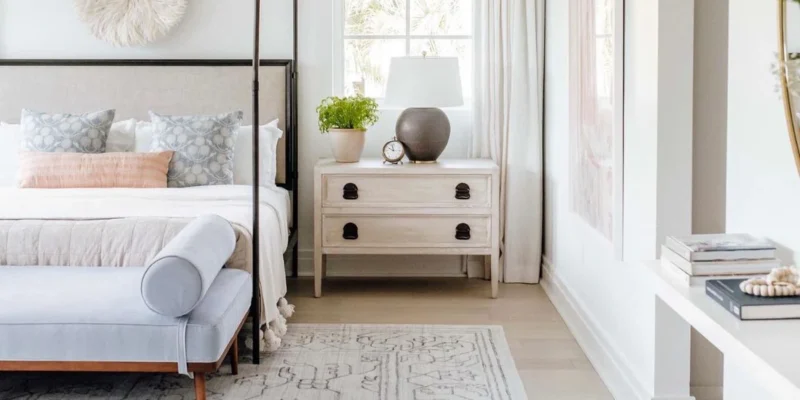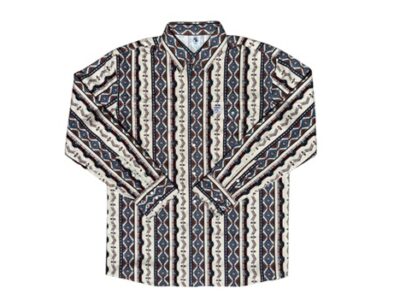Finding the perfect hand knotted rug can transform your space from ordinary to stunning. These carefully crafted pieces bring warmth, comfort, and character to any room. However, choosing the right one requires thoughtful consideration of several factors.
This guide walks you through everything you need to know about selecting hand knotted rugs that complement your space, lifestyle, and budget. Whether you’re shopping for your first rug or adding to your collection, these insights will help you make an informed decision.
Understanding Hand Knotted Rugs
Hand knotted rugs represent centuries of craftsmanship and artistry. Skilled artisans create each rug by tying individual knots onto a foundation, row by row. This meticulous process can take months or even years to complete, depending on the rug’s size and complexity.
The materials used significantly impact the rug’s appearance, durability, and price. Wool forms the foundation of most hand knotted rugs, offering natural resilience and beautiful aging characteristics. Silk adds lustrous highlights and fine detail work, while cotton typically serves as the foundation threads. Some rugs combine these materials to achieve specific textures and visual effects.
The value of hand knotted rugs lies in their construction quality and longevity. Unlike machine-made alternatives, these rugs improve with age when properly maintained. The tight knot structure creates durability that can last generations, making them worthwhile investments for your home.
Factors to Consider Before Choosing
Room Size and Layout
Start by measuring your room accurately. Use a tape measure to record the length and width, noting the placement of furniture, doorways, and architectural features. This information guides your size selection and prevents costly mistakes.
Living rooms typically accommodate larger rugs that anchor seating areas. A common approach places all furniture legs on the rug or positions the front legs of sofas and chairs on the rug’s edge. For smaller spaces, ensure at least 18 inches of bare floor around the rug’s perimeter.
Bedrooms benefit from rugs that extend beyond the bed’s footprint. Place the rug so it extends 2-3 feet on each side of the bed, creating a soft landing for your feet each morning. In dining rooms, choose rugs large enough to accommodate chairs even when pulled out from the table.
Color and Design
Your room’s existing color palette should guide your rug selection. Neutral-colored rugs work well in spaces with bold wall colors or busy patterns elsewhere. Conversely, rooms with neutral walls can handle more vibrant or patterned rugs as focal points.
Consider how patterns will interact with your space. Large patterns can overwhelm small rooms, while tiny patterns may get lost in expansive areas. Geometric patterns suit contemporary spaces, while floral and curved designs complement more classic interiors.
Balance plays a crucial role in design selection. If your furniture features bold patterns or bright colors, choose a more subdued rug. Conversely, neutral furniture allows for more adventurous rug choices that add personality and visual interest.
Pile Height and Texture
Pile height affects both comfort and practicality. Low-pile rugs work well in high-traffic areas and under dining tables where chairs move frequently. They’re easier to clean and maintain, making them practical choices for busy households.
Medium-pile rugs offer a balance between comfort and practicality. They provide cushioning underfoot while remaining manageable for regular maintenance. These work well in living rooms and bedrooms where comfort matters but durability remains important.
High-pile rugs create luxurious comfort but require more maintenance. They show footprints and vacuum marks more readily and may not suit heavy-traffic areas. Reserve these for bedrooms or low-traffic spaces where comfort takes priority over practicality.
Matching Rugs to Room Styles
Living Room
Living rooms serve as gathering spaces where comfort and style intersect. Choose rugs large enough to define the seating area while complementing your furniture arrangement. Rectangular rugs work well with most furniture layouts, while round rugs can soften angular furniture arrangements.
For modern spaces, consider geometric patterns or solid colors in contemporary palettes. Classic interiors benefit from Persian or Oriental designs with intricate patterns and rich colors. Casual spaces can handle more relaxed patterns and textures that encourage comfort and conversation.
Bedroom
Bedrooms require rugs that promote relaxation and comfort. Soft textures and calming colors create peaceful atmospheres conducive to rest. Consider how the rug will feel underfoot during nighttime trips and morning routines.
Neutral colors and subtle patterns work well in bedrooms, avoiding overstimulation that might interfere with sleep. If you prefer patterns, choose designs with gentle curves or soft geometric shapes rather than bold, energetic motifs.
Dining Room
Dining room rugs face unique challenges from food spills and chair movement. Choose rugs with darker patterns that camouflage minor stains and avoid light-colored or delicate designs in these spaces. Wool rugs naturally resist stains and clean more easily than silk varieties.
Consider rug shapes that complement your dining table. Rectangular rugs suit most dining arrangements, while round rugs work well with circular tables. Ensure the rug extends at least 24 inches beyond the table’s edge on all sides to accommodate chair movement.
Hallways and Entryways
High-traffic areas demand durable rugs that maintain their appearance despite constant use. Look for tightly woven pieces with lower pile heights that resist wear and cleaning challenges. Darker colors and busy patterns help hide dirt and wear between cleanings.
Runners work well in hallways, creating visual continuity while protecting floors. In entryways, choose rugs that can handle outdoor elements tracked in on shoes while still looking welcoming to guests.
Caring for Your Hand Knotted Rug
Regular maintenance extends your rug’s lifespan significantly. Vacuum weekly using the appropriate setting for your rug’s pile height. Rotate your rug every few months to ensure even wear patterns, especially in high-traffic areas.
Professional cleaning every 1-2 years maintains your rug’s appearance and removes deep-seated dirt that regular vacuuming cannot reach. Avoid DIY steam cleaning or harsh chemicals that can damage the natural fibers and dyes.
Address spills immediately by blotting rather than rubbing, which can push stains deeper into the fibers. For significant stains or damage, consult professional rug cleaners who understand the specific requirements of hand knotted rugs.
Making Your Perfect Choice
Choosing the right hand knotted rug requires balancing practical considerations with personal style preferences. Consider your lifestyle, budget, and long-term plans for the space. Quality hand knotted rugs represent significant investments that should serve you well for decades.
When ready to buy premium rugs in India, work with reputable dealers who can provide information about the rug’s origin, materials, and construction. Hand knotted rugs offer timeless beauty that transcends passing trends, making them valuable additions to any home.
Take time to live with your choice before making final decisions. Many dealers offer trial periods or return policies that allow you to see how the rug works in your actual space and lighting conditions.














Comments